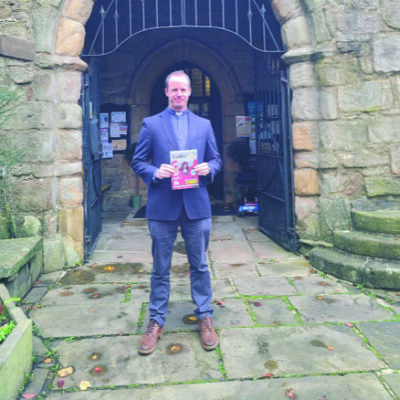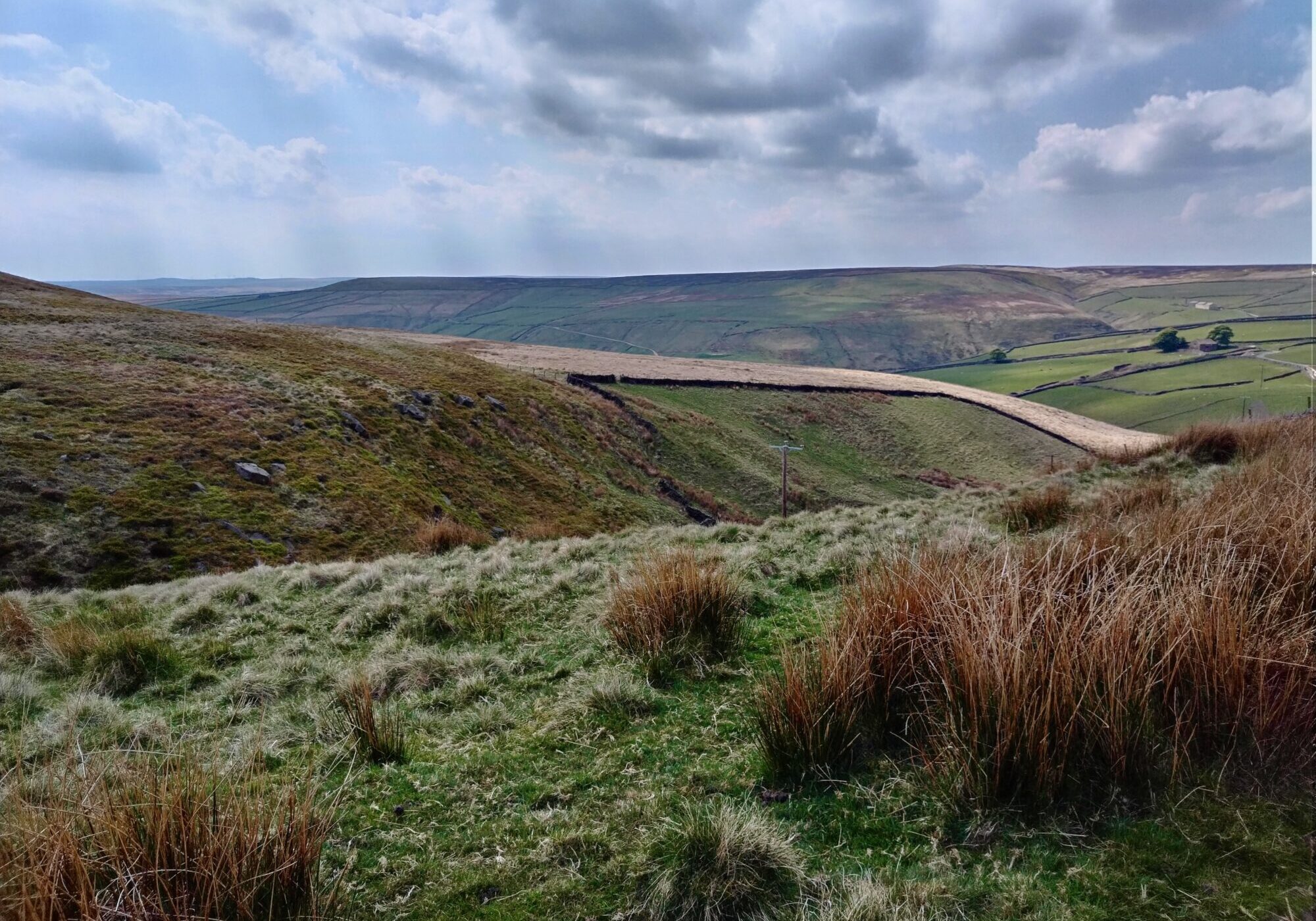
For Peat’s Sake
by Colne Life magazine
WIND FARM PLAN SPARKS PEATLAND CONTROVERSY ON WALSHAW MOOR
Plans for England’s largest wind farm could see 41 towering turbines built on the protected peatlands of Walshaw Moor — just ten minutes from Colne.
Have you ever driven from Colne to Hebden Bridge? This historic route has linked the two towns since the Middle Ages — a fact echoed by the 17th-century Pack Horse Inn near Widdop, which sadly closed in March. The moors stretch in all directions, punctuated only by reservoirs. It’s rugged, isolated, and, of course, windy.
Calderdale Energy Park Ltd hopes to harness that wind with up to 41 turbines, each up to 200 metres tall — nearly 50 metres taller than Blackpool Tower. If built, it would become the largest wind farm in England.
Originally proposed in 2023 with 65 turbines and solar panels, the plan has since been scaled down. Yet even in its current form, the company says the development could power around 250,000 homes a year. With output expected to exceed 100 megawatts, it qualifies as a Nationally Significant Infrastructure Project. That means the final decision lies not with Calderdale Council, but with the Secretary of State for Energy Security and Net Zero.
Walshaw Moor is the first protected upland peatland in England to be targeted for a wind farm
The project is backed by NextGen Infra, a global investor and subsidiary of Saudi-based Al Gihaz Holding. The land is owned by Richard Bannister, the Boundary Mill entrepreneur, and his wife, Janine. Currently, the moor is used for grouse shooting and livestock grazing.
But campaigners fear the turbines would destroy the peat bogs — some of the most effective natural carbon sinks on Earth. Disturbing them, they say, could release more carbon than the turbines would offset.
Local campaigner Jenny Shepherd has been protecting the moor since 2012. “The peatland is irreplaceable,” she says. “It forms at the rate of a millimetre a year. The bogs here have taken thousands of years to develop.”
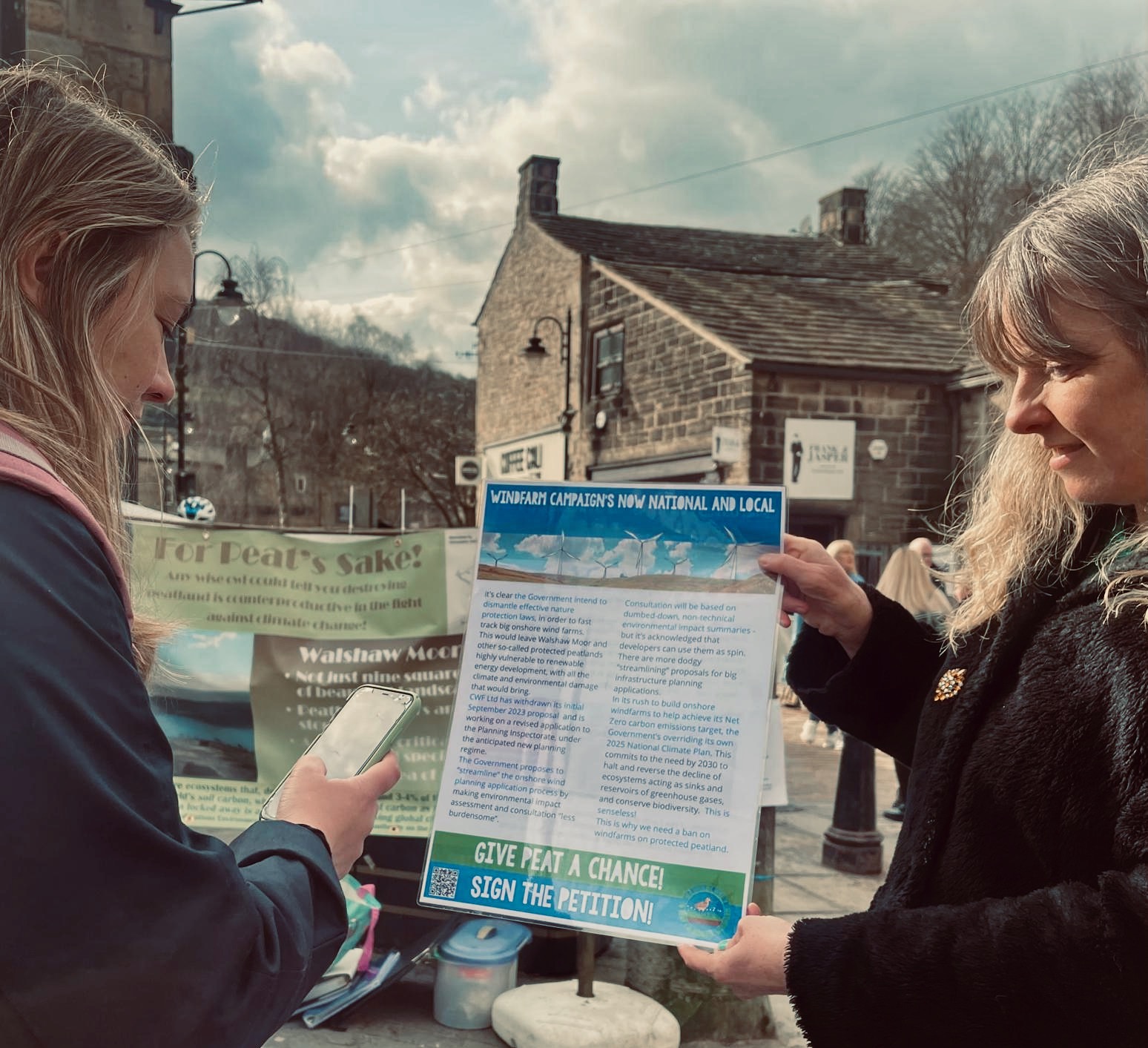
Campaigners from Stop Calderdale Wind Farm in Hebden Bridge
She warns that Walshaw Moor is the first protected upland peatland in England to be targeted for a wind farm. “If this is approved, it’ll open the gates to similar developments across other protected, windy peatland areas.”
Peatland also helps reduce flood risk. “It acts like a sponge,” Jenny explains. “In 2012, we had a summer of floods in Hebden Bridge. One was a pluvial flood — water just rushed off the tops into the valley.”
“All the wilderness and the romance of those literary associations will be lost.”
Durham University research backs her up. A 2016 study found that burning peat moss increased peak water flow and lowered water quality.
The moor is also home to rare birds. Designated as a Special Protection Area and Special Area of Conservation, it welcomes endangered species like curlews, lapwings, and golden plovers every spring.
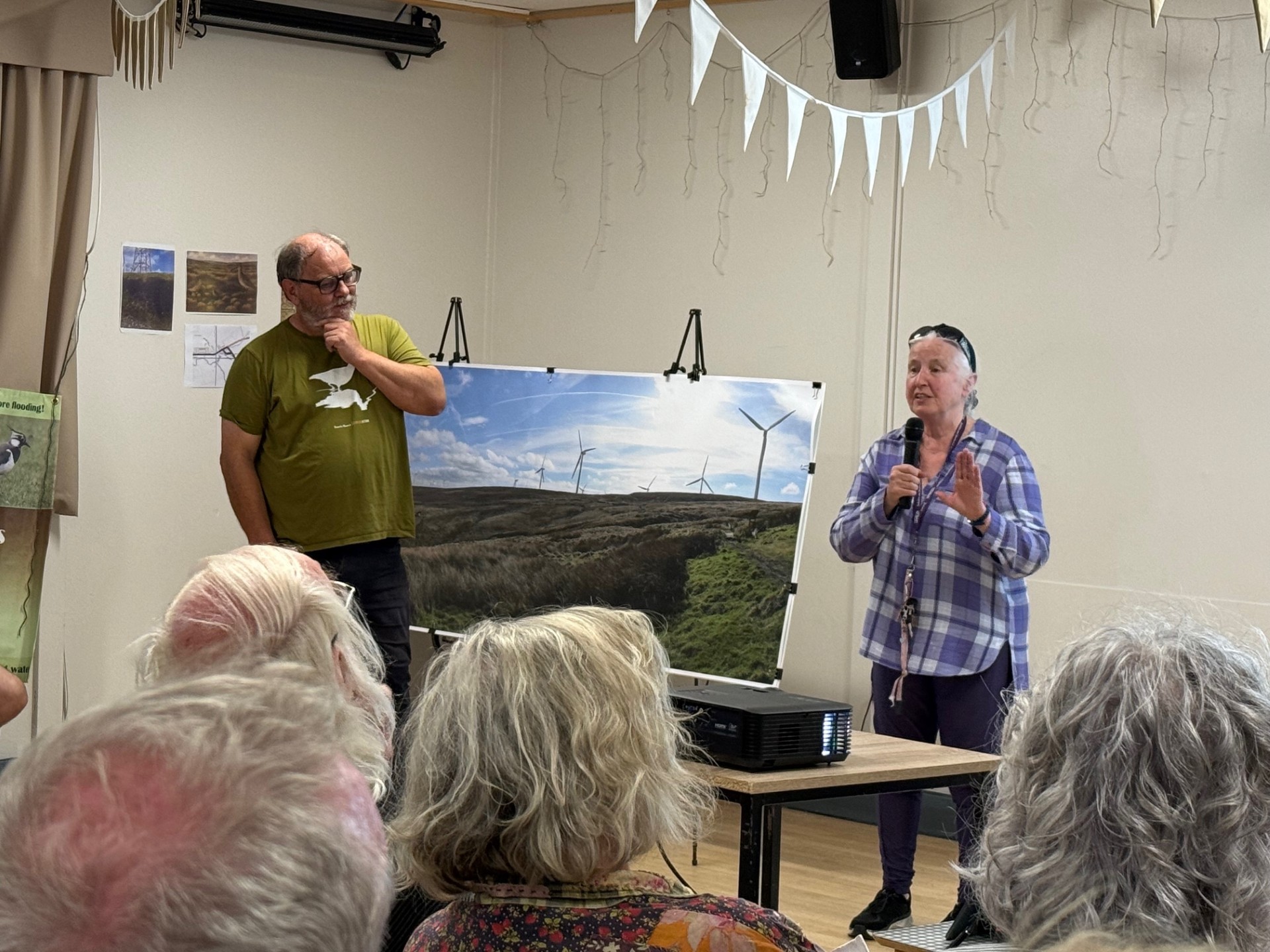
A recent talk in Trawden discussed the impact of the proposed wind farm on Walshaw Moor
Not all opponents are anti-renewables. “There’s a whole slew of nature, climate and ecosystem reasons why it’s the wrong place,” Jenny says. “We’re not against green energy.”
Councillor Sarah Cockburn-Price, who represents Boulsworth and Foulridge, agrees. “We are quite a poor area, but the moors draw in tourists — and that would be taken away,” she says. “We are seriously industrialising what is essentially the huge wilderness between us and Bradford.”
Sarah also fears for Colne’s creative identity. “All the wilderness and the romance of those literary associations will be lost. The Brontës walked those moors. Kate Bush fans gather every year in red dresses to celebrate Wuthering Heights. That cultural connection will be wiped out.”
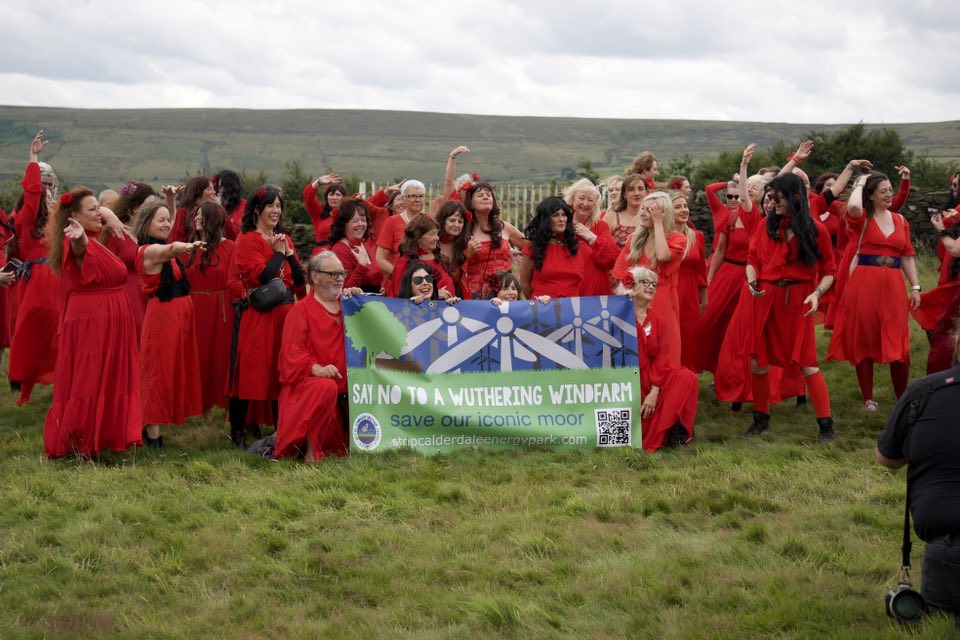
Kate Bush fans show opposition to the wind farm
Access is another concern. Local roads near Colne and Laneshaw Bridge are narrow, winding, and often hard to navigate — let alone with 200-metre-long turbine parts. The company says it is working with local authorities to manage deliveries and safety.
In a statement, Calderdale Energy Park Ltd said:
“Our design process incorporates extensive peat depth surveys, habitat mapping, and hydrological assessments. We are committed to avoiding deep peat wherever practicable and minimising disturbance through careful siting of infrastructure and the use of low-impact construction techniques.”
The company says it is also developing a Peat Management Plan and engaging with Natural England. It promises local benefits, including:
- Enough clean energy for 250,000 homes
- Cutting carbon emissions by 350,000 tonnes per year
- Local jobs during construction and operation
- A Community Benefit Fund for local projects
- Green skills training and development
“We remain committed to engaging openly with the community and stakeholders,” the spokesperson added.
Still, many believe the moors between Colne and Hebden Bridge are the wrong place for such a large-scale project.
For more information on the proposals, visit:
calderdaleenergypark.co.uk
To learn more about the concerns, go to:
stopcalderdalewindfarm.co.uk
ColneLife Autumn 25


